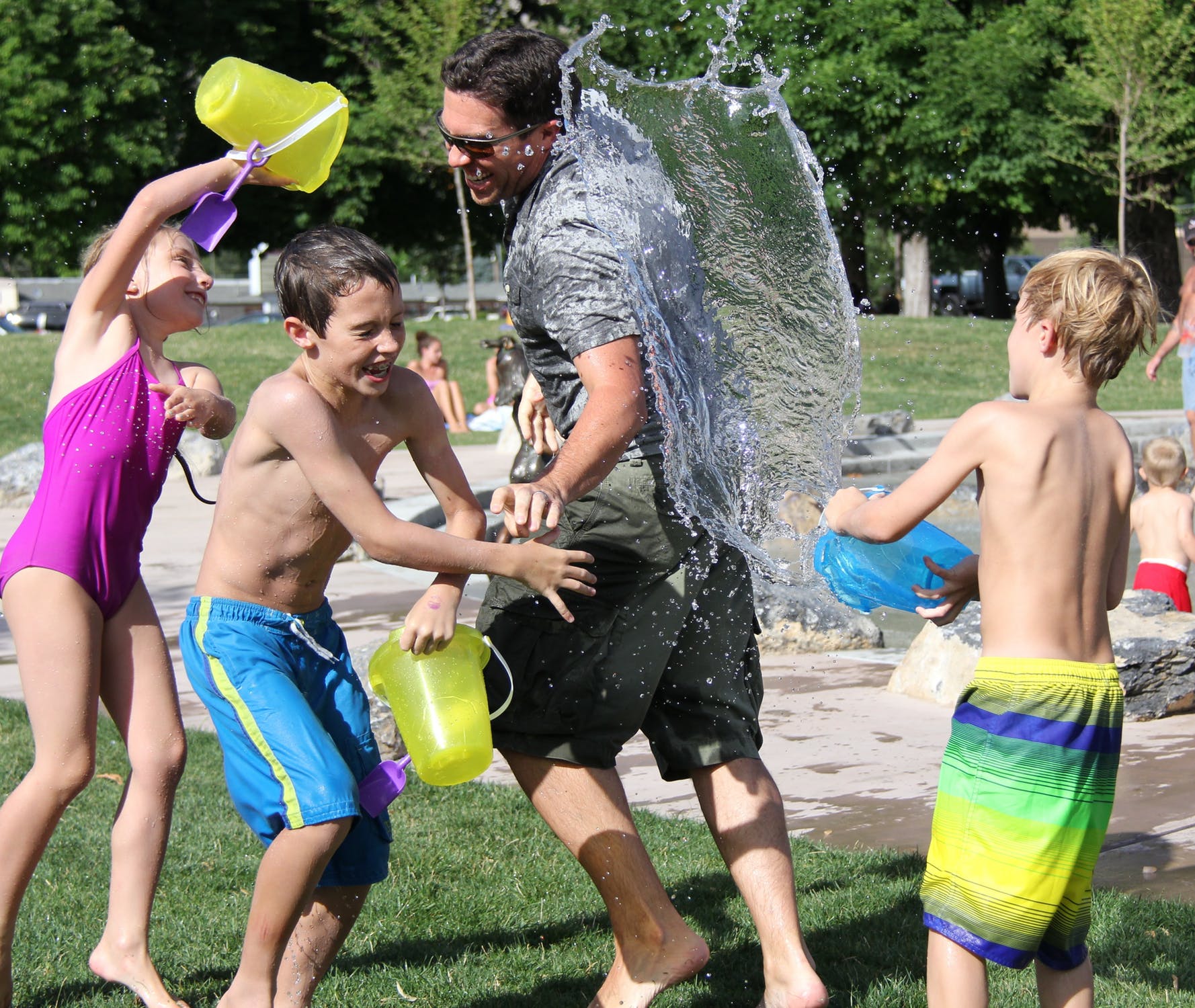Diagnosis No Longer Synonymous With Hopeless
“Diagnosis”-No Longer Synonymous With Hopeless
Learning and Behavior Spets LLC, Making Waves in Education
by: Rachel Robinson
In the education, mental health and human service fields, there is a current buzz surrounding something called “trauma-informed practice.” This idea starts with the brain, and identifies and acknowledges the effects of previous trauma on thinking, feeling, processing, decision-making, and other key processes. Trauma-informed practice is sensitive to the reality that in many cases the brain has been injured or impaired in some way, and therefore learning, thinking and feeling are adversely affected. Teachers, counselors and social workers use their knowledge of past traumas to be sensitive to children’s needs. Doctors write countless prescriptions daily for young children suffering from ADHD and other rising diagnoses. Remediation has become a norm for so many schools. Educators are realizing the need for students to receive small group instruction and one to one attention in attempt to bridge foundational gaps. Title One programs are designed to target children who are struggling with reading. Many high schools now offer enrichment periods during the day, in attempts to help students who may be struggling with specific subjects. In regards to reading, phonics instruction, decoding practice and comprehension, tactics seem to work somewhat, still teachers and parents often see slow, marginal gains and students become more and more frustrated as their confidence drops.
It’s easy to see a need for results. There’s frustration and an urgent need to improve focus, attention, test-taking skills and grades. Perhaps the biggest tragedy occurs when we become content with accepting the idea that some of our children will remain permanently academically impaired because of trauma or delays, hoping only that they can keep their head above water or simply get by.
Wendy Wall, owner of Learning & Behavior Spets LLC in Roanoke believes that we don’t have to give up on our children or settle for less than academic success. A certified PACE practitioner, with a reading spet and special education background, Wendy’s program provides hope for struggling children and frustrated parents.
What’s so different about the PACE Program’s approach? Wendy was happy to explain by example.
On a regular Tuesday morning bright and early, Reed Ewing and his mother Meredith take one of their three-day-a-week drives from their home in Blacksburg to Roanoke to meet with Wall. Meredith Ewing can’t wait to talk about how impressed she is with her son’s progress, in fact, she’s beaming.
“We were struggling with basic memory, like his birthday, names of family members, things like that,” Mrs. Ewing remembers. Evaluations at school showed processing impairment and delays. Modifications were put in place for Reed and yet from first grade to second grade, Reed remained at the same level with most skills.
“He wasn’t able to put sounds together. Just ten weeks ago he wasn’t a reader, not really,” says Wall. Mrs. Ewing and Wall recount just a few months prior, when two-word combinations proved a struggle for Reed, and his discouragement had increased. After a new evaluation at age seven, Reed began the PACE Program and has not been the same since.
“Now he’s reading street signs while we are driving, he’s calling out the names of restaurants as we pass them,” Mrs. Ewing smiles. “He even told his little sister that he can help her now because he is ‘a smart kid’.”
Reed can’t wait to show what he’s got. He takes his backpack and glasses case downstairs where he and Wendy work together. Though somewhat shy at first, Reed cannot hide his excitement and pride in his work. The two begin by pulling out several materials to help improve visual memory. On the sheets are color names written out, hundreds of them. Unusually enough, each color name is written in the wrong color. For example, the word “red” may be written in yellow ink, and the word “yellow” may be written in blue ink. Wall instructs Reed to read the words-but there’s a catch.
“I want you to say the color of the word, not the word as it’s written. For any blue word you see, I want you to change it to green and for any green word, I want you to change it to blue.” Wall takes out a metronome and sets it to a fairly quick and steady rhythm. While this task would seem daunting even for most adults, Reed excitedly goes over each word, almost fifty in a row, nearly flawlessly. Wall changes the directions to read names instead of colors and throws in another challenge with reds and blacks. Reed does not miss a beat.
During auditory processing exercises, Wendy isolates sounds aloud to a similar cadence as a metronome and then taps twice on the table before Reed says the word. Reed is able to hear all of the individual sounds and put them together to form a word in rhythm.
“P-uh-l-s,” tap-tap-“Pulse!”
Reed is able to identify vowel sounds as Wall says the word aloud. Reed then immediately recognizes the vowel and replaces it with all other vowels in succession.
“Nasp,” tap-tap- “Nasp,nesp,nisp,nosp,nusp!”
At this point his confidence is soaring and he can’t wait to show off his “golf skills”. He closes his eyes and begins to connect lines from hole to hole, avoiding “sand-traps”, this is another visual memory game. Reed does amazingly well at this special exercise. He adds up points he accrues for his few misses, and by now is bubbling with excitement. As Wall explains the program, Reed preciously interjects superlatives to show his agreement with the program’s success. He is clearly proud of himself, as he takes ownership of his learning.
The PACE program was started by an eye doctor, oddly enough, Wall explains. Initially, he recognized the need to treat patient visual processing deficits. A team of professionals were assembled, which included audiologists, psychologists, and special educators. These spets studied and researched a variety of cognitive processing skills. The team uncovered a plethora of auditory and visual processing and cognitive enhancement techniques.
Wall continues that the outcome of this research has made a huge impact in addressing impairments and improving brain function for soldiers who have experienced trauma in Iraq, children and adults suffering from various brain injuries, stroke, Alzheimer’s, autism and ADHD. For so many people whom society has taught we must stop here at trauma and diagnoses, this is big news.
Wendy talks about her excitement upon seeing the recent film The Vow. Based on a true story, the film depicts the account of a young wife who has recently suffered brain trauma as a result of a car accident, and has to get to know her husband all over again. Wendy was able to see this woman explain her story in person, and listen as she described the process of improving her memory, nearly identically to the PACE Program procedures.
“For so long people thought we could not correct or work with the brain, but the brain can be changed. It can grow and respond differently,” continues Wall. Mrs. Ewing agrees.
“For us, we just see it as exercise. The same way you can exercise your muscles you can exercise your brain,” Reed’s mom says as she gestures with her arm.
Wendy Wall pulls out a book of student gains as she explains the PACE Program. It lasts about twelve weeks, and yes, it is intensive. The program can be delivered five days per week or three days per week with homework. Wall shows evidence of huge gains in these three months as she pulls student profiles outlining 7 ½ year improvements in measureable areas like working memory. One student has an 8 year growth in logic and reason skills and another 3 year gain in focus and attention.
“We don’t at all teach to tests here either,” says Wendy. Learning & Behavior Spets LLC uses the Woodcock-Johnson Tests of Cognitive Abilities to gauge student progress. These tests are respected for assessing a wide array of cognitive abilities. PACE Program participants find that even before any reading or spelling work which Wendy offers through her Master The Code Reading Program, they experience great improvements in language arts skills.
Many students follow up with the Master The Code Program which builds on PACE and further enhances attention, auditory analysis, short and long term memory, processing speed, sound blending and segmenting, visualization and working memory.
These comprehensive program offerings don’t stop there. Play Attention involves innovative strategies for improving attention in children diagnosed with ADHD. These sessions involve using a computer to measure brain activity associated with attention. The techniques are based on the premise that “attention is not a deficit; it is diffused or consistently shifted from one event to another unless the event is highly stimulating. Play Attention teaches the “skill” of being able to focus and attend in situations which are boring or low stimuli.” Students are able to glean techniques to help understand the abstract concept of attention, and make it a concrete, controllable idea.
Learning & Behavior Spets have seen great results from the programs and are therefore passionate about the work that is being done. Wendy has surely made believers out of Meredith and Reed. For information on summer programs and the ones discussed in this article please visit learningandbehaviorspets.com.






